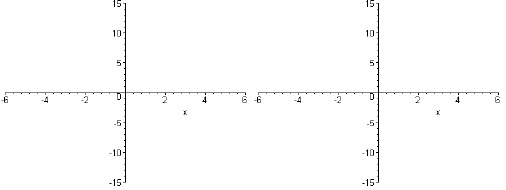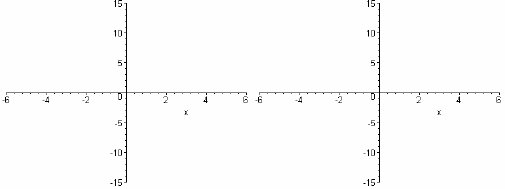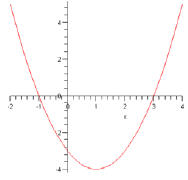161 Practice Exam 2
Let

1. The domain of f is ______ and the domain of g is _____
2. Which function is even, and which function is odd. Prove your answer.
3. What is ?
Is it even or odd?
?
Is it even or odd?
4. What is
 and
what is its domain?
and
what is its domain?
5. Find  and
and

6. Draw a picture of an even function on the left and an odd function on the right.

7. Fill in the blank: a function is one to one if ______________________
8. Give an example of a function that is one to one, and a function that is not one to one.
9. Draw a one to one function on the left and a function that is not one to one on the right.

Let the function F be defined by the ordered pairs:
{(0,1) , (1,2) , (2,4) , (3,8) , (4,16) , (5,32) , (6,64)}
10. What is the domain of F?
11. What is the range of F?
12. Is F a one to one function?
13. Describe  as a set
of ordered pairs.
as a set
of ordered pairs.
Let 
14. Prove that f is one to one.
15. Find 
Let 
16. Prove that g is one to one.
17. Find 
18. Find the vertex of the quadratic function
 The minimum value
of f is ____ when x = ____
The minimum value
of f is ____ when x = ____
19. Find the vertex and the zeros of the quadratic function pictured below.

20. Over what intervals is the function positive, and over what interval is it negative?
21. Find the vertex of the quadratic function The minimum value
of g is ____ when x = ____
The minimum value
of g is ____ when x = ____
22. Why is it clear that g has two real zeros?
23. Find them.
24. Solve for x: 
25. Solve for x: 
26. Find the two complex solutions to Make sure to write the answer in
standard form.
Make sure to write the answer in
standard form.
27. Multiply: 
28. Divide: 
29. If you divide
 by
by  and the remainder is 7, then
and the remainder is 7, then
 ____
____
30. Use synthetic division to divide:

31. For  ___
___
32. Use synthetic division to show that 3 is a zero of the polynomial

33. Use your answer above to factor p.
34. Find the other zeros of p and factor completely.


